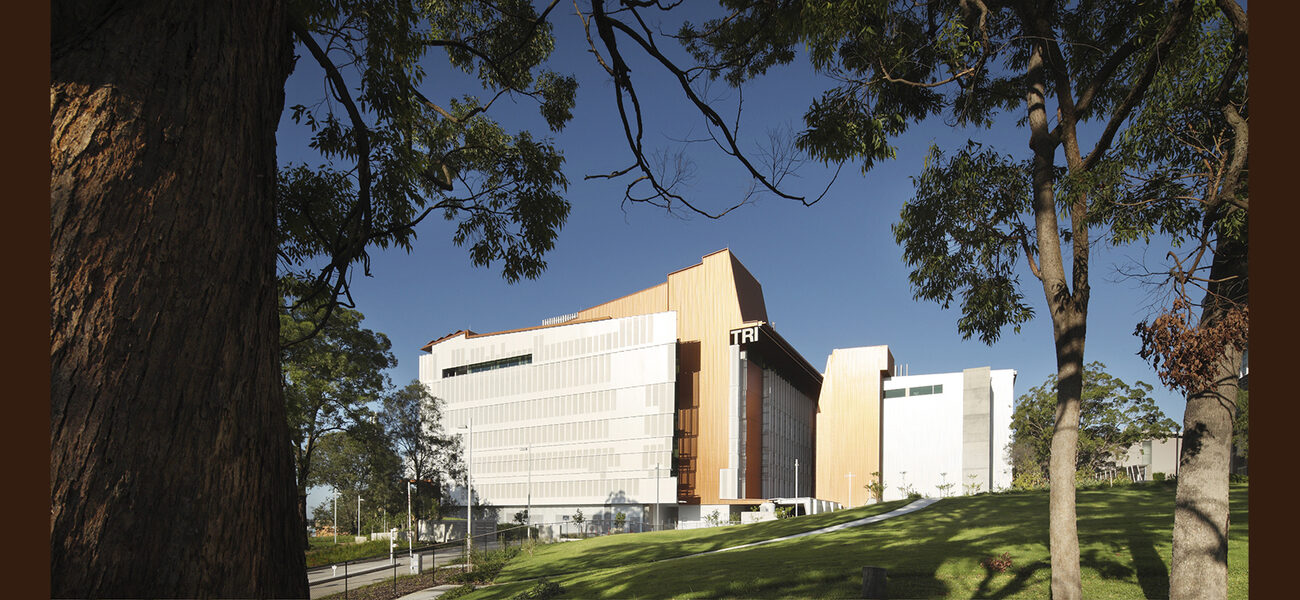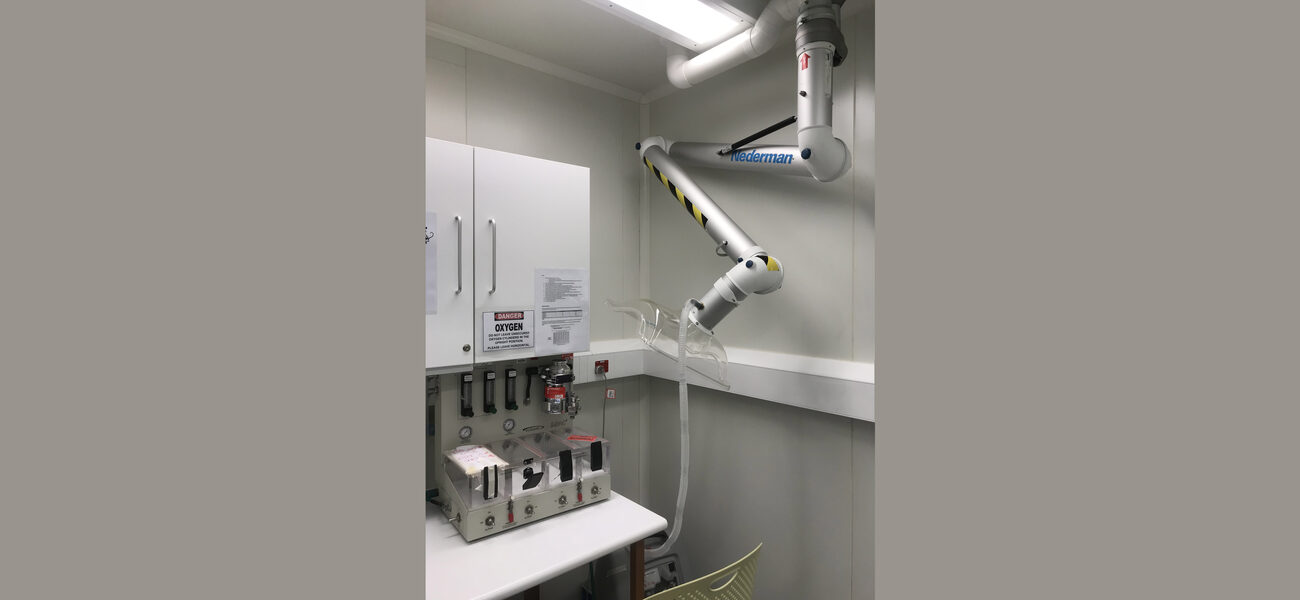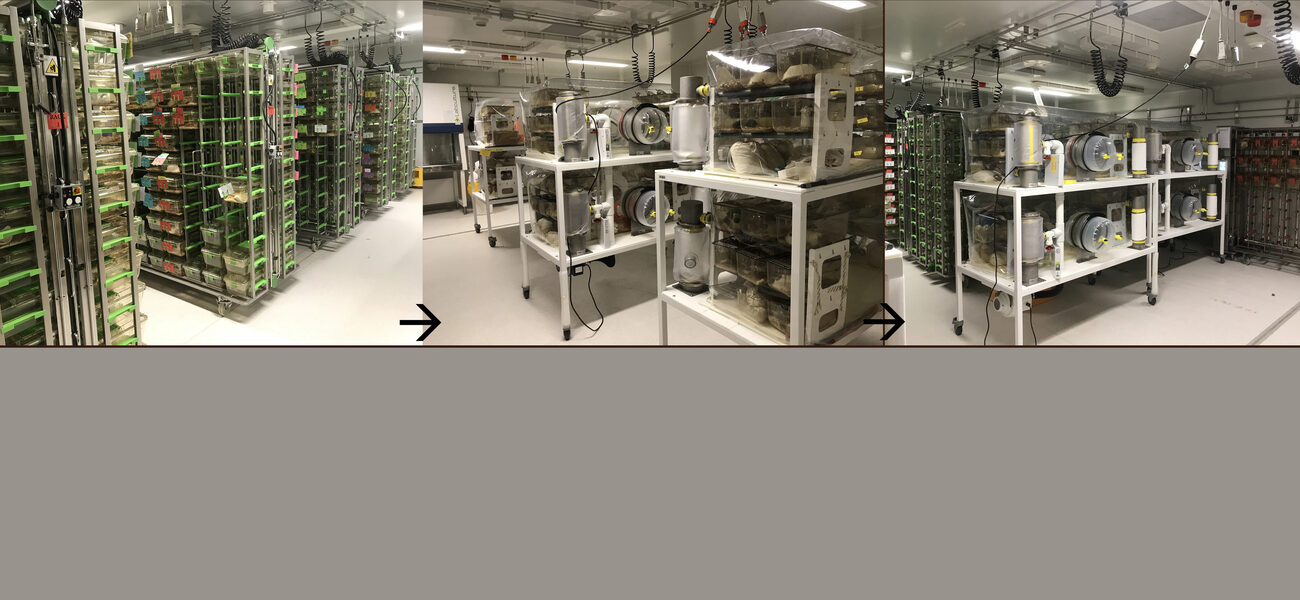Operations at the Specific-Pathogen-Free (SPF) vivarium in Australia’s Translational Research Institute (TRI) are likely indicators of trends in animal facilities across the globe. The benefits of automated systems for watering and cagewash, and a robust database to capture a host of operational details—from sterilization runs to task scheduling to costing—have been clearly proven. At the same time, new directions in research, such as study of the microbiome and the gut-brain axis, are sparking a greater need for germ-free and gnotobiotic facilities, a shift that leads to higher ratios of procedure-to-support space and increased staffing levels. The rederivation process and advances in animal health monitoring are also harbingers of change.
“Over the last five years, the SPF has transitioned from establishment and growth to long-term operation and diversification,” says Tess Vogts, TRI core facility manager. “We have learned many interesting and useful things throughout the journey.”
Space Breakdown
The seven-story, 344,500-sf TRI—the largest medical research institute in the southern hemisphere—opened in 2012, with a capacity for over 1,000 researchers and support staff. The 20,700-sf SPF began operation the following year. Housing mostly mice with a small capacity for rat work, it measures more than 360 feet from end to end. From its ground floor location, it services over 200 users from 66 different research groups with a staff of approximately 22 full-time equivalents and a cage capacity of 12,000. To maintain its stringent cleanliness standards and animal handling protocols, the L-shaped facility has only one general entry and exit. The structure has been designed to prevent researchers from accessing the breeding wing of the building.
Its space breaks down into five clusters:
- support and amenities, including wash-up and autoclaves, change rooms, offices, and storage, accounting for 45 percent of the total facility
- experimental holding rooms, surgical rooms, and multipurpose spaces—23 percent
- breeding animal holding rooms and breeding prep space—6 percent
- gnotobiotic facility—9 percent
- preclinical imaging and radiation facilities—7 percent
Why SPF?
The TRI chose to design the vivarium as a specific-pathogen-free facility to better serve the needs of its customers, at the same time offering them a capability not otherwise available locally.
“By excluding known animal pathogens, researchers can expect improved baseline health of mice and consistency of experimental results,” says Vogts. “Our researchers also work with a large number of immunocompromised mice, including NSG™ mice, which are notably more susceptible to detrimental infections.”
Looking at the SPF’s five-year operational history, Vogts cites its equipment and automated systems as being especially successful.
Mice are housed in Tecniplast® ISOcages with automatic air handling units and Edstrom automatic watering.
“Both are easy to use and highly efficient, and the cages have great benefits in limiting user exposure to allergens and significantly restricting the spread of infections between cages,” she says.
Other areas of automation that have been very beneficial include the bedding dispenser, cagewash, and waste disposal systems, which minimize ergonomic strain and increase efficiency. Once supplied with machine-dispensed corncob bedding, all fresh cages are autoclaved before delivery to the animal rooms.
Lighting, air handling, and alarm systems are also automated.
Health Testing
Specific-pathogen-free operation means that researchers know which microorganisms the mice do not carry. Vogts explains that there is no single pre-defined list of infective agents to exclude; each individual facility selects its own set to screen for. For the SPF, that choice was based on the pathogens’ negative impact on mouse health and research, for example, mouse influenza.
Health testing takes on heightened importance in this type of environment.
“Maintaining a clean health status requires a significant health monitoring program and the associated expense,” she notes. “You need to consider what method to use, in-house or contracted testing; whether to use dirty bedding sentinels versus leftover mice or exhaust air dust testing; and how often testing should be conducted.”
A review of its testing practices led the SPF to reevaluate the original frequency and methods. It was determined that testing once a year is not enough, given the varying mix of facility users and the regular arrival of new mice (even though these are tested before release to the general population).
A new policy is currently in development.
“It depends on how much money you have to spend; the more often you test, the better,” she says. “We probably want to do a full facility scan at least every 12 months, and possibly even six. This means taking samples from mice and sending them to an outside lab for testing.”
After a pilot deployment, a supplemental measure—exhaust air dust testing (EAD), which affords constant monitoring of exhausted air at the rack level—is slated to be installed throughout the facility.
“It’s cheaper and easier to run, and you don’t have to kill mice to get test results.”
There is an additional benefit to the new scheme. The SPF found that traditional health monitoring methods were less effective with its Techniplast Green Line ISOcages, because infections are well-contained within the cages. If the standard testing does not screen from every cage, infections can be missed.
“EAD is still a new technique, and at this point we are not confident that it is a replacement for historical testing methods,” says Vogts. “But it is a helpful supplementary testing and monitoring system. The idea is that if we can do exhaust air dust testing, we can do the more expensive and ethically less appealing things less often.”
Testing costs for 2019 are estimated at $80,000 for live animal screening, plus an additional $20,000 in exhaust air dust trials. The total may increase, especially if specific disease investigations are in order. That gives rise to some questions.
“Does the researcher or the facility bear the cost of sample testing?” asks Vogts. “What if the results come back positive? The colony may need to be discarded or restarted from scratch.”
Rederivation
SPF researchers work with a number of mouse lines that must be rederived to preserve their genetic makeup and maintain the consistency of experimental results while guaranteeing clean health status. Rather than setting up this process in house, the facility opted to contract with an outside provider. The choice has both advantages and drawbacks.
Rederivation is problematic because it is not always successful, explains Vogts. Some mice have infections, so the effort must be restarted, and the outcome is not guaranteed.
As a process, rederivation is not popular because it takes a long time and is very expensive. Users are dissatisfied when they have to put all research on hold awaiting new animals. They lose time when they should be producing, and they also have to pay for technical expertise necessary for the process.
"Still, it would have been a lot slower and more time consuming to recruit, train, and set up the infrastructure on our own,” she says, adding that the nearby location of a facility that provides rederivation services was another factor in the decision not to self-perform. “If that facility hadn’t been so close, we might have done it ourselves.”
Gnotobiotics
The push to explore the role of the microbiome in a variety of research areas, from metabolism and gastroenterology to mental health and behavior, spurred the SPF to incorporate housing for gnotobiotic mice into three breeding-wing rooms.
“In gnotobiotics, specific organisms (or known biota) are introduced to the sterile animals, and the effects are studied in isolation,” explains Vogts.
These mouse colonies are raised and maintained in 100 percent sterile environments, provided by isolator systems that typically accommodate multiple cages. The downside is that each isolator allows the study of only a single experimental permutation at a time. For greater flexibility and more cost-effective experiments, the SPF supplemented its capability with two racks of positive-pressure ISOcages.
“The benefit of the ISOcage is that a researcher doing only a small project will need just a few cages, instead of having to run the entire complement of cages in an isolator,” says Vogts. Even though the overall layout of both ISOcages and isolators reduces available capacity compared to a standard breeding room, she judges them an excellent addition.
“Researchers can test a number of experimental variations at once. The increased control allows them to define and study the effects of specific organisms on all aspects of health, even using high-risk agents normally excluded from animal facilities. This would not be possible otherwise.”
While the physical configuration is fairly straightforward, the strict protocols required to prevent exposure to undesired microbes have had significant operational impacts. Higher maintenance demands have pushed up staff-to-cage ratios markedly—from one person taking care of hundreds of cages in a standard facility to roughly 50 to 100 cages in a germ-free environment.
“Gnotobiotics is all about procedures,” observes Vogts. “Everything takes longer for fewer cages. Attention to detail and the ability to follow processes exactly are essential to maintain sterile conditions and comprehensive records.”
Such rigor significantly increases training requirements for personnel. A four-day, hands-on training session at the National Gnotobiotic Rodent Resource Center at the University of North Carolina enabled the SPF’s gnotobiotic coordinator to set up the new facility with zero contamination for the first 12 months.
“This was the most beneficial investment for us, in terms of quickly establishing our gnotobiotic capability,” she says.
She also recommends that new staff have a minimum of six months of on-site training before being allowed to work without supervision.
Another essential resource was the handbook, “Gnotobiotic Mouse Technology: An Illustrated Guide,” by Chriss J. Vowles, Natalie E. Anderson, and Kathryn A. Eaton. The SPF was able to take most of its standard operating procedures from this comprehensive manual, saving considerable in-house time and effort.
Among other measures that contribute significantly to effective gnotobiotic operation, Vogts recommends having a sink within the facility to reduce the time and ergonomic risk associated with preparation for decontamination, “an integral process in gnotobiotic work.” She also emphasizes that “computers in both preparation and holding rooms are invaluable to the facility documentation and work processes when teamed with an effective database tool.”
Lessons Learned
Other responses to the ever-increasing variety of technical demands have been more challenging to implement. Due to new directions in research and the movement to decrease animal populations for ethical reasons, the SPF finds itself running at an average of 33 percent cage utilization. At the same time, it has outgrown its experimental space and would benefit from more than the 12 benches currently available. While the facility’s Dagard paneling is excellent for maintaining cleanliness, it is “prohibitively expensive to modify.” Alterations like adding more procedure space or outfitting rooms for reverse lighting and behavioral studies entail too many changes to services or structure to make them imminent options.
“The gnotobiotic facility has been able to utilize the excess breeding space we have, but it doesn’t help with our experimental issues,” says Vogts. “The lesson from this is to design flexible spaces with the ability to repurpose areas to respond to changing research needs.”
From an equipment perspective, researchers have found the vacuum exhaust system that removes excess anesthetic gas during administration to be less than effective. Its bulky, articulated arm is too stiff to manipulate. One solution is replacing the arm with a more flexible version now available; pending that retrofit, the facility has rigged a temporary fix by attaching flexible anesthetic scavenging tubing to the devices.
Initially, only certain spaces in the SPF had telephone access, but as the need to assure communication in all parts of the facility became obvious, phones were installed in every room.
Vogts would also like to see the swipe-card network expanded to cover all rooms, for greater control. Video monitoring of room access and operations could be helpful, but it is not a complete solution: The network can store only two weeks of data, and the camera is not always focused on the right area to capture the targeted activity.
By Nicole Zaro Stahl
| Organization | Project Role |
|---|---|
|
Mouse Caging
|
|
|
Edstrom
|
Automatic Watering
|
|
Dagard
|
Paneling
|



